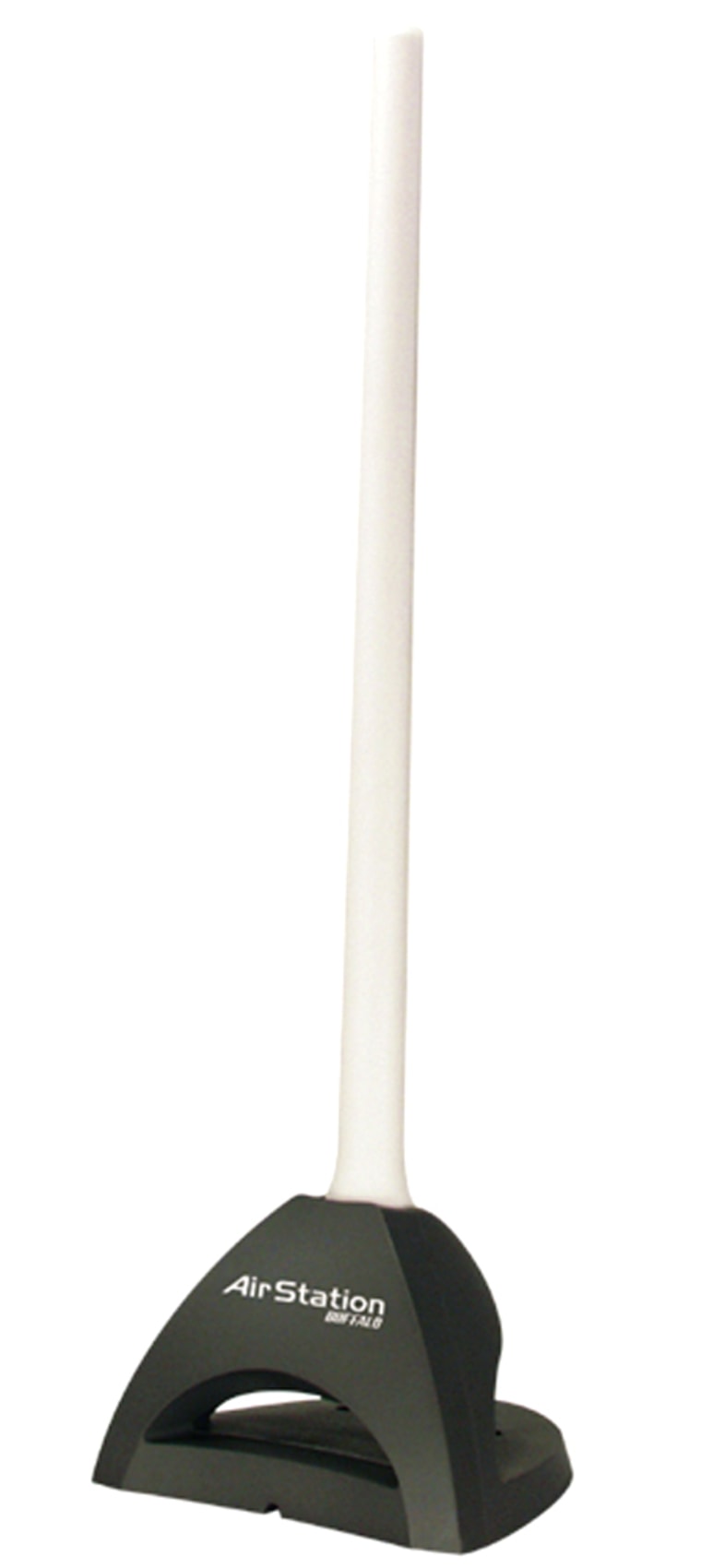My new apartment has an entirely different layout from my old place, more square in shape than rectangular. That meant my Buffalo Tech Wi-Fi network needed some serious tweaking. In particular, I wanted to improve coverage in a back room at the opposite end of my home from the cable connection.
I needed an antenna with gain, that is, one that amplifies the signal. I’ve used Buffalo high-gain antennas before. In a different situation their square directional antenna did the trick when I was trying to connect to a network on a different floor in a house.
But in my new place, I need coverage in all directions — not only distant but in nearby rooms, too. That’s why I was intrigued by Buffalo’s new indoor, omni (all) directional WLE-HG-NDR Antenna. I hooked it up as soon as I got it.
First of all, it’s tall, nearly 14 inches including the base. Luckily, it weighs less than half a pound. It’s made to work with Buffalo Technology 2.4 GHz 802.11b/g access points and PC cards. Both devices come with a tiny, little connector for just such purposes. It will also plug into any other manufacturer's Wi-Fi product which uses an MC card connector or a RP-TNC connector.
Installing and connecting the antenna is brainless. You open the little trap door for the antenna connector on your access point or PC card and plug it in. That’s it. There’s a 4-foot, 9-inch long cord so you can move the antenna to a good position.
You can mount the antenna on the wall or let the whole thing sit on your desk. The angle of the white antenna whip can be adjusted for best reception. In my case, I was able to attach the device, place it out of the way on a tall cabinet — and point it toward that far-away room. At some point I intend to mount it on a wall to further improve signal strength. Of course, that’s only if it passes muster with the local home decor police.
In a perfect world, the antenna is said to provide a boost of 6.5 dBi. (Decibels isotropic, or dBi, is a way to describe relative antenna gain.) My world is not perfect. That 6.5 dbi doesn’t take into account many factors — including the cord I mentioned two paragraphs ago. In reality, the antenna gave me a 4.7 dbi improvement (walls and furniture not withstanding). What all this really means is that installing the antenna is equivalent to doubling your Wi-Fi network’s signal strength. Theoretically, Buffalo claims an improved coverage area of up to 140 meters or nearly 460 feet.
Of course, the big test is how the thing works. I’m happy to report that Buffalo’s WLE-HG-NDR antenna did exactly what it was supposed to do. Signal strength in my back room is now usable. At the same time, my Wi-Fi network is usable everywhere else, too.
So, now I can surf the Web in all parts of my apartment and most importantly, all my computers, including the ones I’m testing for use as a super-high quality CD playback system in my hi-fi, can connect to the Web without a problem.
The WLE-HG-NDR antenna is highly recommended. It sells for $39.99 on Buffalo’s Website and less (as low as $32 and change) on other sites.
